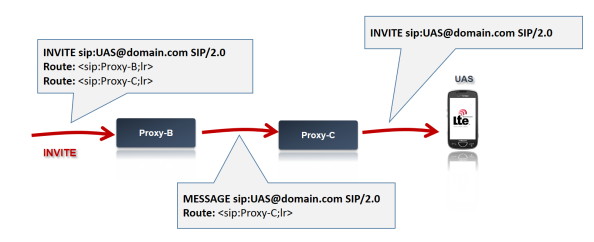In the last post we have seen a basic SIP (VoLTE) session. This time we should analyze in more detail, what headers are used by network elements for their routing decisions and how they discover what port and IP to use. In practice that’s what people are not always sure about. They know the flow, order of signalling messages, but when something goes wrong, they are just guessing what could be the reason.

SIP Message Routing
Let’s recap what we have learnt so far. We use loose routing. So if a SIP message contains a Route header, we will use the top most one for the routing. If there is no Route header the routing is done based on the Request-URI, which contains the address of the final recipient. Don’t forget, network elements are able to add and modify the headers. The way how we handle the messages and modify their content within the IMS is described in 3GPP standards.
